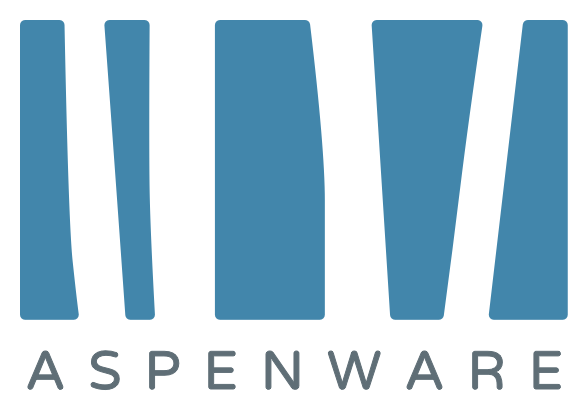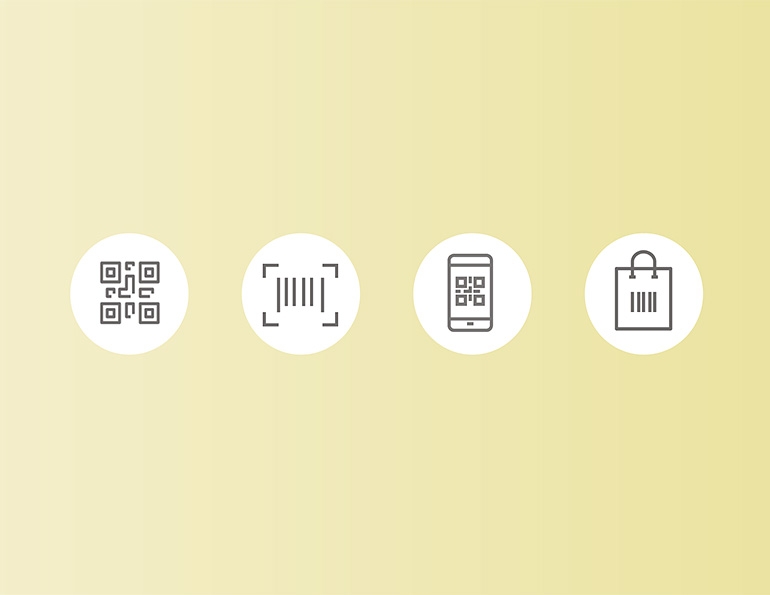The planning discussions that ski area personnel are having about this coming winter are decidedly different than, well, any other planning discussions they’ve had about any winter, ever. Now isn’t the time for knee-jerk reactions and to only consider solutions for the strange winter ahead, though. The pandemic should be the catalyst for many ski areas to reevaluate their processes and leverage technology to offer a better guest experience moving forward, pandemic or not.
“I think resorts should take a step back, take a breath, sit down with their team and think long term, big picture roadmap,” says Snow Operating CEO Joe Hession, owner of Mountain Creek and Big Snow in New Jersey, as well as SnowCloud, the new enterprise-software solution used at both operations. “Ask, ‘What are we trying to do?’ And I think they’ll find that the roadmap will bring them to a friction-free process anyway.”
Technology can help execute planned routes on that map. And it seems ski area operators realize that. According to several technology vendors, the phones have been ringing lately, mostly from operators of small to midsize ski areas that now recognize they need to step up their game with e-commerce and on-site redemption processes. This is really good news.
Unprecedented Demand
With a small handful of U.S. resorts having reopened, and Southern Hemisphere resorts about to get winter started at press time, we already have some examples of modifications that may be instructive for whatever the 2020-21 season brings. Perhaps the biggest from a product sales standpoint is the likelihood that ski areas will need to cap the number of guests that can visit per day, and do so by only selling lift tickets and taking passholder reservations in advance, online.
In some cases so far, the chance to go skiing created a frenzy akin to when tickets for a Rolling Stones concert go on sale, and ski area systems can’t keep up. Aspenware CEO Rob Clark has engaged in ideation sessions with resorts to identify issues presented by modified operations—including how to handle limited supply and big demand—and figuring out how Aspenware’s e-commerce and software integration solutions can help.
“People’s eyebrows are being raised by the demand that limited capacity generates,” says Clark. “I don’t think people expected it, but now is the time to adapt solutions to meet that demand.”
For example, Arapahoe Basin, Colo., knew folks would be excited about its reopening May 27 with extremely limited capacity, but it didn’t expect what happened when reservations went live. “At 7 p.m., a couple nights before reopening day, we opened up the online system to fill the 600 reservations that were available,” said A-Basin COO Alan Henceroth on the June 8 SAM Huddle titled, “We’re Open.” “In about 15 seconds, 4,000 people logged on and completely crashed the system.”
In lieu of trying first-come, first-served reservations again, the resort went with a perhaps more equitable lottery system, which seemed to work well. Of course, even with a vast majority of the spots allocated for passholders, many were disappointed not to have their name drawn.
There were other flaws, too, says A-Basin VP of operations Peggy Hiller. “Most notable was the fact that we didn’t have any way to predict how many ‘winners’ from the drawing would actually show up,” she says. “We had some days that could have had more skier capacity and more people satisfied.” Hiller says A-Basin is considering repercussions for no-shows this winter.
Another good example of high demand is Thredbo in Australia, which refunded pre-purchased season passes because it’s only allowed to operate at around 50 percent capacity, per the Australian government’s direction, and a season pass could no longer offer unlimited skiing and riding. Instead, the area sold all lift tickets in advance online, and refunded passholders can buy tickets at a 40 to 70 percent discount.
To help manage the expected demand, Thredbo teamed with Queue-It, a software that puts customers into a virtual waiting room in the order they logged on, letting them into the store when their turn arrives. This ensures the online store doesn’t get overwhelmed, as A-Basin experienced. It’s the same system Ticketmaster uses to manage demand.
Even so, when Thredbo opened its online store on June 11 for lift ticket sales, it had roughly 25,000 people trying to buy tickets at one point during the day, and many guests reportedly waited for hours until it was their turn. However, enough people got through that the allotment of daily lift tickets through August 30 sold out in less than a week.
Reservations and E-Commerce
From one perspective, this kind of demand is cause for celebration. So many people want to ski that they’re crashing websites and waiting hours for the chance just to buy lift tickets. Eat your heart out, Jagger.
From the guest service perspective, though, it ain’t that great. Guests who weren’t able to score a reservation to ski were pissed, and took to social media to vent their frustration.
Clark wonders how best to approach online sales if ski areas need to operate at a limited capacity and take reservations online to fill the spots. “That model is really interesting, but is that what you really want from a guest service perspective?” he asks. “Do you want people sitting there clicking refresh and whoever has the fastest internet speed gets to ski? Or is a lottery like what A-Basin did a more equitable way to approach it? And then are there rules, such as if you won yesterday, do you not win today?”
That’ll be up to individual ski areas to decide, but preparing for spikes in demand and limited capacity means the system needs to be highly scalable. Have a talk with your reservations system and e-commerce vendors to ensure the system is ready.
Product inventory. Season passes make capacity limitations and required advance reservations a bit more complicated. Season pass revenue is vital for most all ski areas, and passes have been on sale for the 2020-21 season since spring. How can operators be fair to their committed passholders and still have space for lift-ticket buying non-passholders?
According Casey Parliament, president at resort reservation, POS, ticketing and reservations software provider InTouch, it comes down to capacity control by product. “We have the ability to dynamically adjust inventory allocations based on demand,” he says of the InTouch software. For example, if a ski area has 500 spots for passholders and 500 spots for lift ticket purchasers on Jan. 1, but there is far more demand for lift tickets, inventory can be shifted in real time to meet that demand.
Crystal Mountain, Wash., COO Frank DeBerry says there are a few things to consider if resorts need to limit ticket sales this winter, as Crystal did when it reopened for a week in June. “If you’re going to use a reservations system, then can your online platform account for all of the products you want to offer, including passes and other non-date-specific products you sell? You don’t want to get stuck with major manual work-arounds,” says DeBerry.
Additional information. One of the biggest reasons why lines form in base areas and inside buildings is because ski areas require—or at least ask for—a lot of information from guests. “In some cases, resorts will capture all of that information in the online purchase flow, but often they’ll try to avoid that because it’s a barrier to purchase,” says Clark.
So, rather than ask 47 questions that take 10 minutes to answer and risk losing the sale online, resorts will gather some information during the checkout process and collect the rest on-site. And even if they do gather all of the information ahead of time, guests often need to go to a desk anyway to sign a waiver or pickup media, which causes lines.
Since lines are to be avoided altogether, resorts should consider digital waivers and gather all guest data during the reservation process. Hiller agrees that the online reservations system should capture a lot of information not only to avoid lines, but minimize contact time with resort staffers.
And then there’s the issue of first-timers. “One of my biggest concerns is how to help someone new to the sport navigate this process when they may not even know everything they may need to succeed,” says Hiller. “An idea could be to perhaps have a larger call center to help walk new skiers and riders through the reservation process.”
Resorts may also need to gather COVID-related information, at least for this winter. Questions such as: Do you have a cough? Do you have a fever? Have you been in contact with anyone infected with COVID-19? If the guest answers no to all of the questions, they can move forward with their purchase.
It could be wise for ski areas to ask their guests these questions on-site. Clark says instead of human interaction, though, some resorts are asking if they can do it digitally in order for the guest to gain access. “So, a guest would need to answer those same questions online, and if they feel good then their pass turns on for the day,” he says.
Contactless Redemption
Self-serve kiosks have already become a popular solution for resorts that want to try and make the guest experience as contactless as possible. For example, Big White in British Columbia purchased 17 Axess Pick Up Boxes to be installed for this winter.
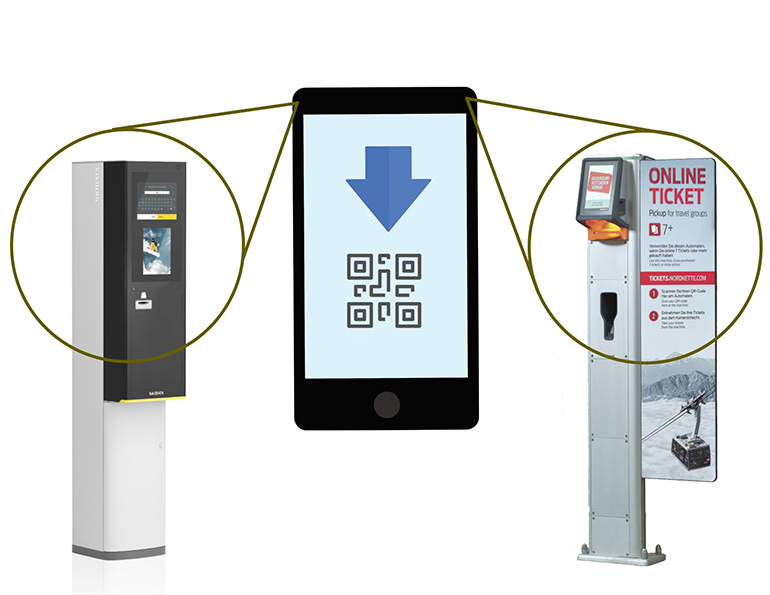 Pre-purchased products will be the core way to sell in 2020-21. Both SkiData (left) and Axess (right) have pick up kiosks that integrate with a multitude of sales platforms that use QR or bar codes as proof of purchase.
Pre-purchased products will be the core way to sell in 2020-21. Both SkiData (left) and Axess (right) have pick up kiosks that integrate with a multitude of sales platforms that use QR or bar codes as proof of purchase.
“They guarantee our consumer access to a ticket even if we have to close our indoor offices,” says Big White senior VP Michael Ballingall. He says the biggest advantage is they’re hands-free—guests purchase the product online and get a barcode via email, which they scan at the Pick Up Box and it vends their media.
Plus, “If the second wave hits, they can be positioned outside and/or in strategic locations that staff don’t need to monitor,” he adds.
Mike Bisner, Axess VP of sales for the East, says the Pick Up Box talks to whatever e-commerce platform and point-of-sale software a ski area uses. Also, it doesn’t just print RFID cards—it can be programmed to print a barcoded piece of media as well. “Bottom line: it’s a ticket dispenser,” says Bisner.
Axess also offers software solutions and the more robust Ticket Kiosk 600 that has a large touchscreen display and is capable of handling a variety of functions.
Skidata, which offers a variety of software and access control solutions, is seeing increased interest from North American resorts for the Skiosk Lite, which offers a “very modular approach,” says Philipp Heindl, Skidata head of people access–North America. “It can be scaled, from pick-up only to a full fledged device, including media pickup for products purchased in advance online, reload existing media, and full purchase on site for Keycards or Keytickets or barcode.”
The Skiosk Lite pick-up or vending versions both come with a touchscreen, but the scanning capability to issue pre-purchased lift tickets offers a contactless transaction—a key feature as resorts move more toward online sales.
Of course, in COVID times, avoiding contact with anything that is touched by a lot of people is important. With ski areas likely moving to all advance sales, the most useful aspect of any kiosk will be the hands-free scanning and dispensing of media. One thing kiosks may not necessarily alleviate, though: ticket lines. Resorts will need to address that issue with physical distancing barriers, signage, markings, etc.
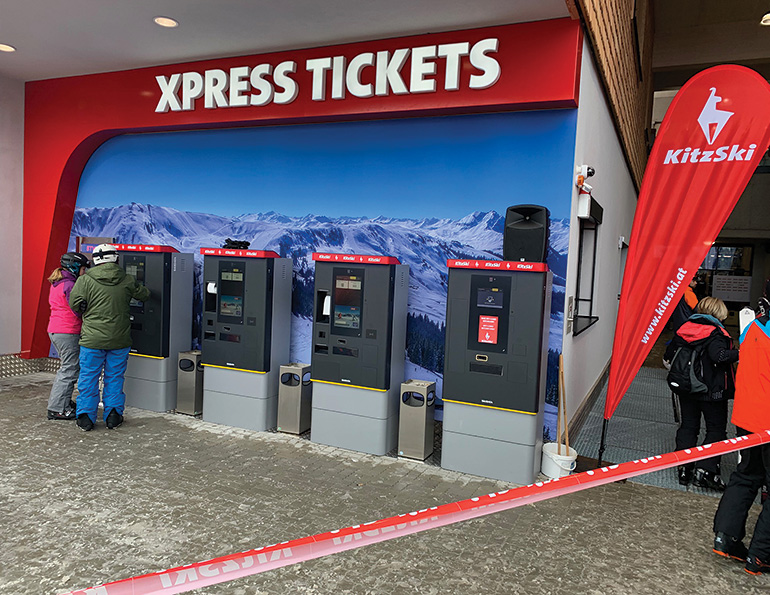
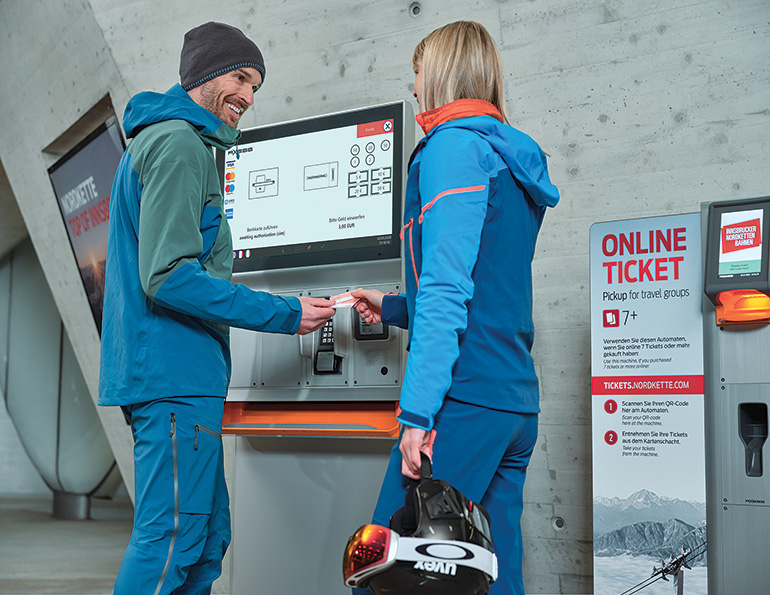 SkiData (above) and Axess (bottom) both provide more expansive kiosks that can perform several functions, including contactless onsite transactions.
SkiData (above) and Axess (bottom) both provide more expansive kiosks that can perform several functions, including contactless onsite transactions.
Think Long Term
While technology vendors and ski areas are certainly developing new things specifically in response to the strange winter ahead, the universal sentiment among those I’ve spoken to is: Whatever major investments and changes you make to get you through this winter need to benefit your ski area long-term.
Low-cost items such as plexiglass barriers at points of sale and floor markings delineating proper physical distance are temporary. Investments in new software, hardware, and other capital expenditures absolutely should not be.
“The ski industry has to be careful not to get ahead of itself,” warns Hession. “Yes, the pandemic is a major problem, it is going to seriously disrupt the way we look at our business. But before anyone spends major capital to do something in the short term, they should make sure it’s in line with their technology master plan.”
A technology master plan? Hession says resorts have gotten themselves in a lot of trouble because they don’t have one, and therefore don’t have a roadmap to follow for future improvements, expansion, and updates.
DeBerry says it’s vital to engage in thorough planning before making decisions. “Walk through the process step by careful step—maybe using a non-skier as a sounding board to make sure you’re not skipping something—and identify how the tech has to work in order to support that process,” he advises. “After you’ve spoken to the vendor, you might also have to adjust the process to fit the tech, but the most important thing is that you don’t overlook any step in your planning—no matter how small it may seem—or you’ll find surprises later that you’re not going to enjoy fixing.”
The ski industry has been a technology laggard, but the pandemic makes this the time to change that. “I think resorts have been aware of the capabilities of the technology available, but they now have a new business driver to rethink their technology strategy,” says Parliament.
“Investments in moving to online sales/reservations will benefit the long term no matter what happens post-COVID,” says Hiller. “Other non-contact technology such as RFID, touchless transaction technology, technology that reduces lines and crowding, will also be positive long-term investments, because these are improvements our guests probably wanted pre-COVID.”
This article is part of the SAM Mountain Department on contactless technology brought to you by Aspenware.